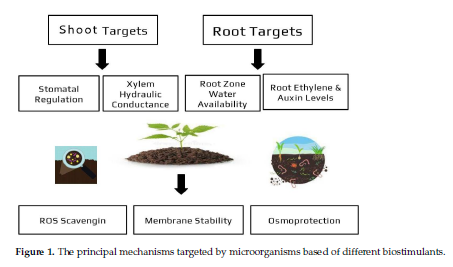Abstract:
Sustainable farming of horticultural plants has been the focus of research during the last decade, paying significant attention to alarming weather extremities and climate change, as well as the pressure of biotic stressors on crops. Microbial biostimulants, including plant growth-promoting bacteria (PGPB) and arbuscular mycorrhizal fungi (AMF), have been proven to increase plant growth via both direct and indirect processes, as well as to increase the availability and uptake of nutrients, boosting soil quality, increasing plants’ tolerance to abiotic stress and increasing the overall quality attributes of various horticultural crops (e.g., vegetables, fruit, herbs). The positive effects of microbial biostimulants have been confirmed so far, mostly through symbiotic interactions in the plant–soil–microbes ecosystem, which are considered a biological tool to increase quality parameters of various
horticultural crops as well as to decrease soil degradation. However, more research is needed to address future challenges of crop production through revealing the mechanisms of action and identifying response patterns of crops to various microbial products. The present review aims to present the most up-to-date results regarding the practical applications of microbial biostimulants in horticultural species, including case studies of successful paradigms for the most important microbial genera of PGPB and AMF. Moreover, the mechanisms of the actions are briefly described while future remarks are also discussed, aiming to suggest further needs to be addressed for the successful establishment of microbial biostimulants in sustainable horticultural crop production.
Key Words:
sustainability; Rhizobium; Mycorrhizas; Azospirillum spp.; Azotobacter spp.; plant
growth-promoting rhizobacteria; arbuscular mycorrhizal fungi



